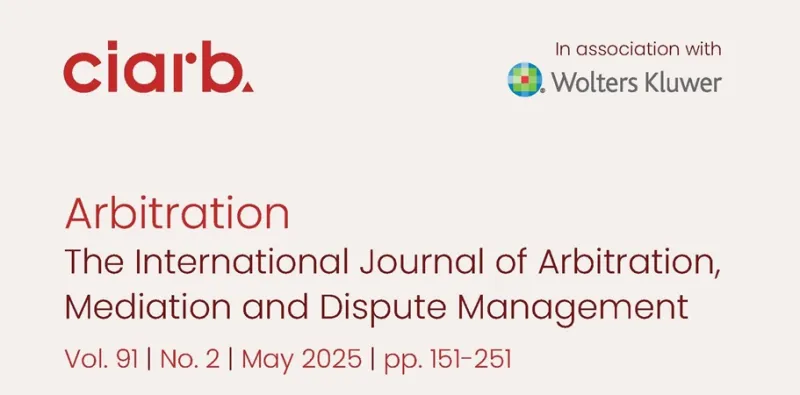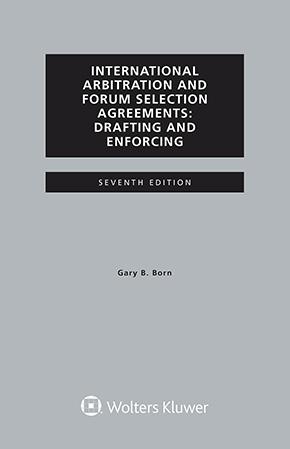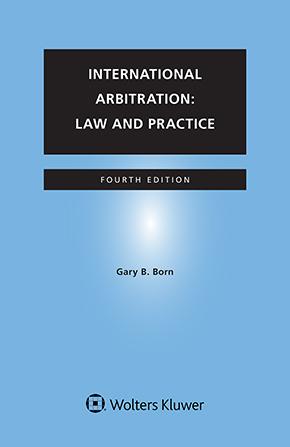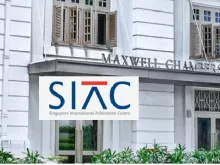The Contents of Arbitration: The International Journal of Arbitration, Mediation and Dispute Management (Ciarb), Volume 91, Issue 3 (2025)
October 4, 2025
In its third issue of for the year, Arbitration touches on a theme that is often unspoken yet deeply influential: arbitral culture.
In her Editorial to this issue, Prof. S.I Strong writes:
‘Culture is a funny thing. Created by the collective unconscious rather than by deliberate choice, culture wields inordinate and often invisible pressure on individual behaviour and beliefs. Culture is particularly important in fields – such as international arbitration – where the rules of appropriate behaviour remain largely unwritten. Some cultural norms are not even recognized as such until the norm is violated, resulting in raised hackles and eyebrows.
The concept of arbitral culture is in ways similar to constitutional conventions in the United Kingdom. Because the UK does not have a written constitution, many constitutional principles exist simply as traditional modes of behaviour. The only way to formally establish such conventions is to bring a litigation to enforce the unwritten norm after it has been breached.
Arbitration is similar. While written rules of procedure exist, many behaviours arise merely as a matter of common expectation. When those behaviours are breached, the injured party brings the matter to the tribunal to resolve.
Of course, these types of disputes are one reason for increasing costs in arbitration. Specialists have long recognized this phenomenon and used it to argue that their insider status places them in the best position to ensure a time- and cost-effective arbitration. Unfortunately, that doesn’t stop parties from hiring less-scrupulous or less-knowledgeable counsel who wittingly or unwittingly breach arbitral norms.
What can be done about this? How can cultural knowledge be transmitted across individuals, across firms, and across national borders?
U.S. Magistrate Judge Wayne Brazil has discussed this principle in judicial settings, claiming that “baby judges” become “acculturated” to their new positions by observing and working with more experienced judges. While effective, this process is of course fraught with potential risks – for example, new judges can pick up harmful biases and inefficient practices through informal mentorships.
Another method of educating newcomers to a particular field is through writings authored by experienced scholars and practitioners. This technique is particularly useful in fields like international arbitration, where knowledge about cultural norms needs to be conveyed across national borders and embraced by a diverse audience of scholars, practitioners, arbitrators, and judges.
Fortunately, the current issue of Arbitration helps promote cross-border understanding of international arbitration by including several articles touching on that topic. Karl Hennessee kicks off the discussion by looking at arbitral culture from the perspective of arbitral “ritual” and considering whether and to what extent artificial intelligence (AI) will affect the profession’s longstanding cultural norms. In a fascinating piece that incorporates the thinking of John Rawls, Ludwig Wittgenstein, and Clay Christensen, Hennessee offers an entirely new approach to the analysis of AI’s role in arbitration. The article is simultaneously practical and theoretical, conceptual and technical, and is a must-read for anyone in our field.
While Nikolaos Voutyrakos’s article on public policy does not explicitly invoke culture, public policy – particularly “international” public policy – is a culturally derived norm. Voutyrakos’s contribution is especially important because it discusses public policy in the context of sports arbitration, a particularly niche practice within the world of international dispute resolution.
Fabian Ajogwu and Peace Omotayo Adeleye consider the culture of confidentiality in arbitration in their article on international commercial arbitration involving states as parties. Although the principle of transparency has been well-discussed in the context of investor-state arbitration, those proceedings invoke public considerations that are typically absent in commercial disputes. Ajogwu and Adeleye explore the tension that arises between the culture of confidentiality in international commercial arbitration and the culture of transparency in matters involving states as parties through the lens of the decision in Federal Republic of Nigeria v. Process and Industrial Developments Limited, although the principles under discussion have a far wider application.
The issue concludes with three shorter pieces: an update on a previously published article by Gordon Blanke concerning the enforceability of DIFC-LCIA arbitration clauses after the promulgation of Dubai’s Decree No. 34/2021; a book review by Graham Morrow concerning extra-contractual recoveries on construction projects; and a book review by Gordon Blanke on construction law. While these contributions have fewer words than their longer counterparts, they are equally insightful.’
We are happy to announce that the latest issue of Arbitration is now available and includes the following contributions:
ARTICLES
Professor Clay Christensen (Harvard Business School) described two ways technology may impact incumbent industries: sustaining and disrupting. This article surveys recent critiques of the practice of international arbitration (IA) and assesses whether, in light of those critiques and of the basic tenets of arbitration, the growing presence of artificial intelligence (AI) as a tool is more likely to be the former or the latter. It concludes with assessments of the present state of AI guidance available and makes recommendations.
Caster Semenya’s legal saga against World Athletics centred on the alleged illegality of the organization’s Differences in Sex Development (DSD) Regulations. These rules imposed a blanket ban on athletes with testosterone levels exceeding prescribed thresholds from participating in women’s competitions unless they artificially reduced their testosterone levels through hormonal treatments. Semenya challenged the Regulations before the Court of Arbitration for Sport (CAS) as a world-class athlete directly impacted. Following her defeat at CAS, she filed an annulment petition before the Swiss Federal Supreme Court (SFSC). After losing again, Semenya resorted to the European Court of Human Rights (ECtHR), which ultimately held Switzerland accountable for violating the athlete’s human rights, including non-discrimination, respect for private life, and the right to an effective remedy. This protracted jurisprudence sparked intense debate across human rights, medical, and sports communities but received limited attention within legal and, notably, arbitration circles. This article contends that the SFSC erred in upholding the CAS award, which should have been annulled on public policy grounds. The author also explores how fundamental human rights violations can be incorporated into the otherwise enigmatic public policy mosaic by critically analysing public policy as a ground for setting aside CAS arbitral awards.
Confidentiality in international commercial arbitration remains one argument made in support of arbitration. However, on careful analysis, some jurisdictions do not recognize an implied right to confidentiality in arbitration, notwithstanding people’s varying perceptions. The idea of privacy has been distinguished from the idea of confidentiality in arbitration. Therefore, while an arbitration hearing may be held privately, it does not necessarily mean that every element of such arbitration is impliedly confidential. As such, some elements of an arbitration may be disclosed, notwithstanding when such arbitration has been held in private. On the flip side, while confidentiality cannot always be implied from every ‘private’ arbitration, the privacy of such arbitration shields some of the elements of the arbitration from the eyes of the public. Therefore, it reinforces the very idea of confidentiality in arbitration. In this article, the authors make a case for less confidentiality and greater transparency in international commercial arbitration involving state parties while taking a cue from the decision of the English Court in The Federal Republic of Nigeria v. Process and Industrial Developments (P & ID) Limited.
This article, a sequel to an article of the same title published in the preceding issue of this Journal, discusses two further recent court rulings, one from a local United Arab Emirates (UAE) court and the other from a United States (US) court of appeal, that deal with the question of enforceability of a Dubai International Financial Centre (DIFC)-London Court of International Arbitration (LCIA) arbitration clause following the enactment of Decree No. 34/2021. Albeit that the Decree constitutes a positive source of law from an internal UAE perspective, defaulting DIFC-LCIA arbitration clauses to a DIAC forum seriously undermines the concept of party autonomy in arbitration. This raises the question, broached by the US Fifth Circuit Court of Appeal in its recent ruling, of whether arbitration under the DIFC-LCIA Rules may be administered by an institution other than the DIFC-LCIA following the abolition of the DIFC-LCIA as a result of the Decree.
BOOK REVIEWS
Gordon BLANKE, Book Review: Julian Bailey, Construction Law (London Publishing Partnership, 2024)
You may also like











